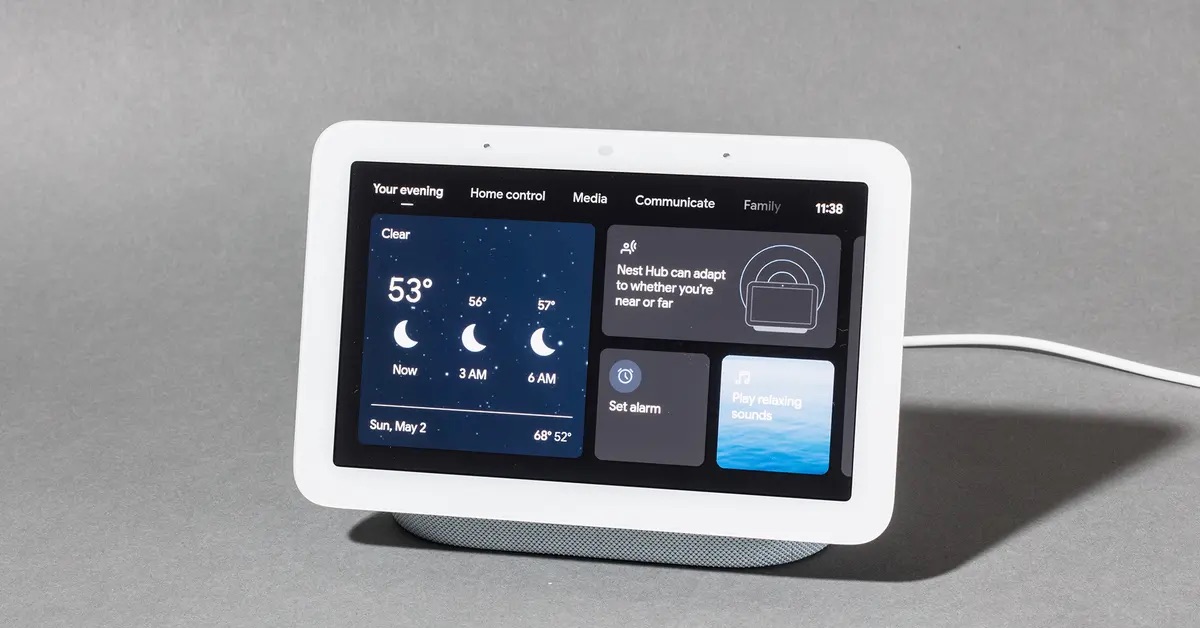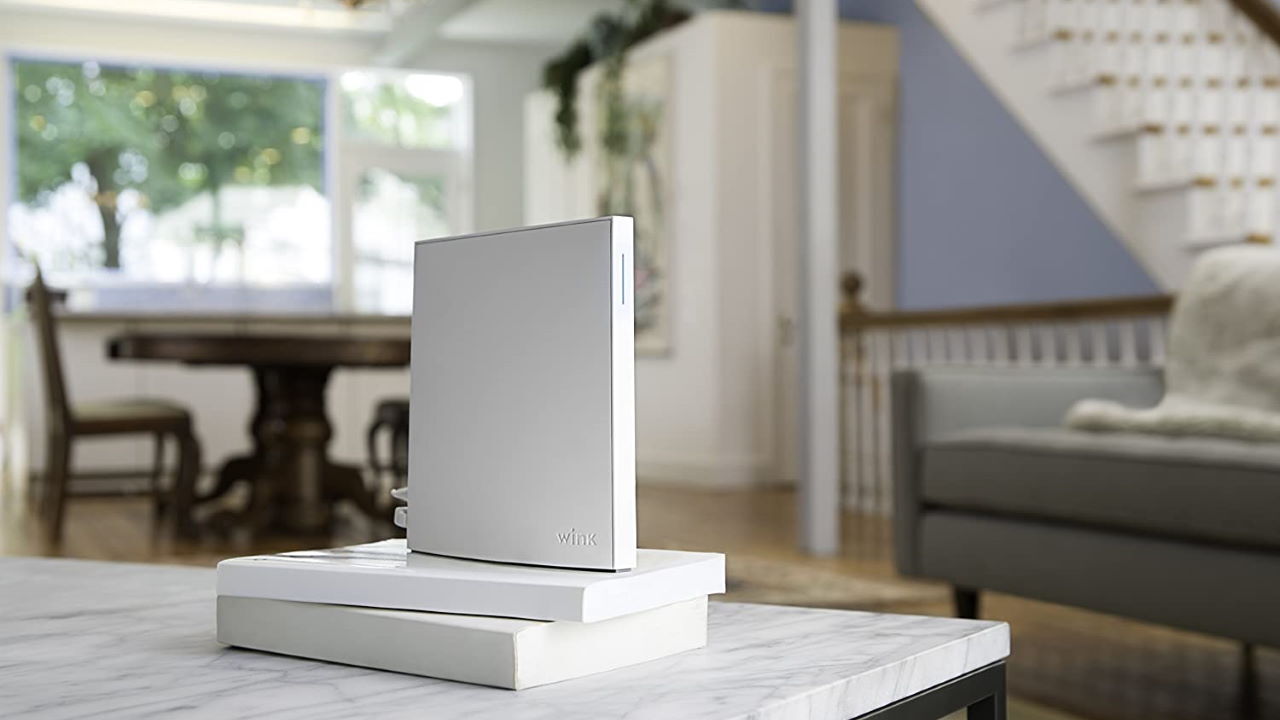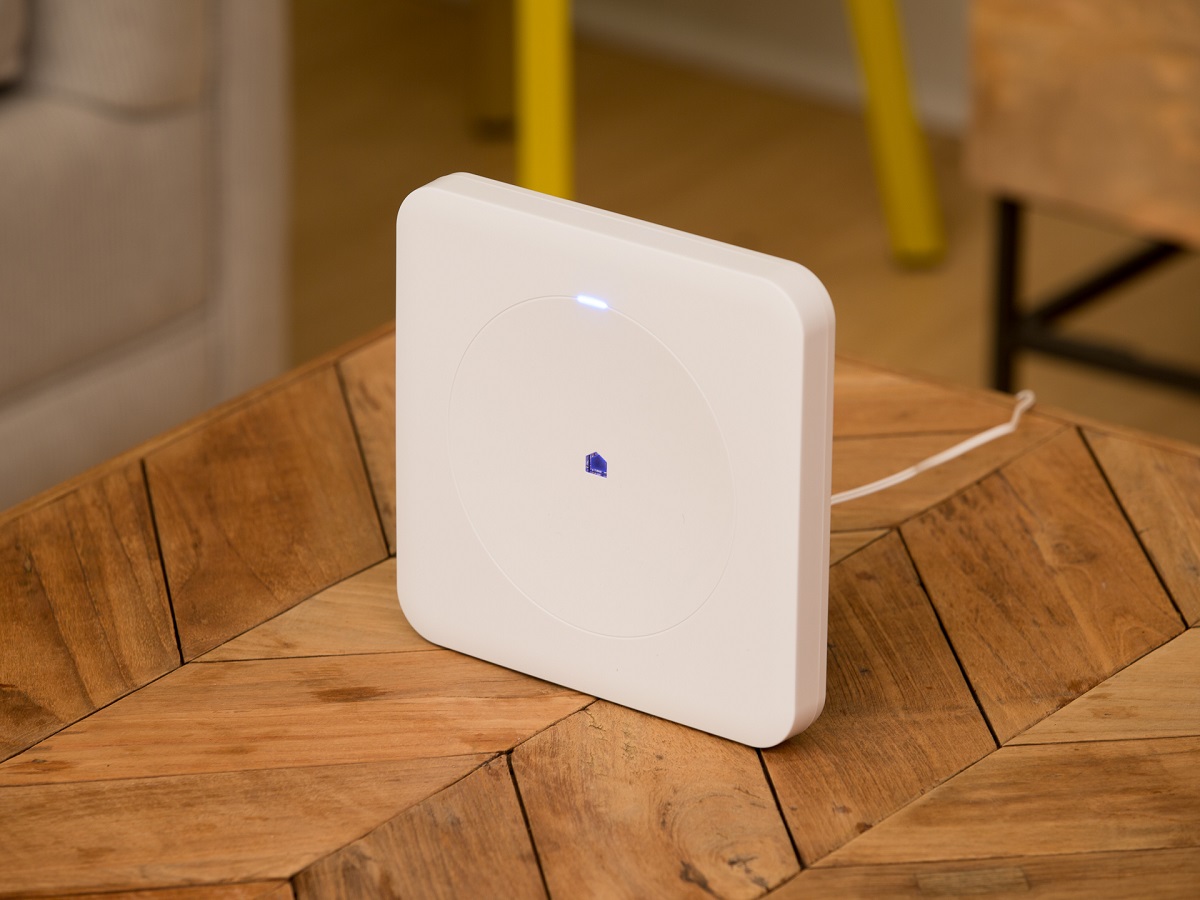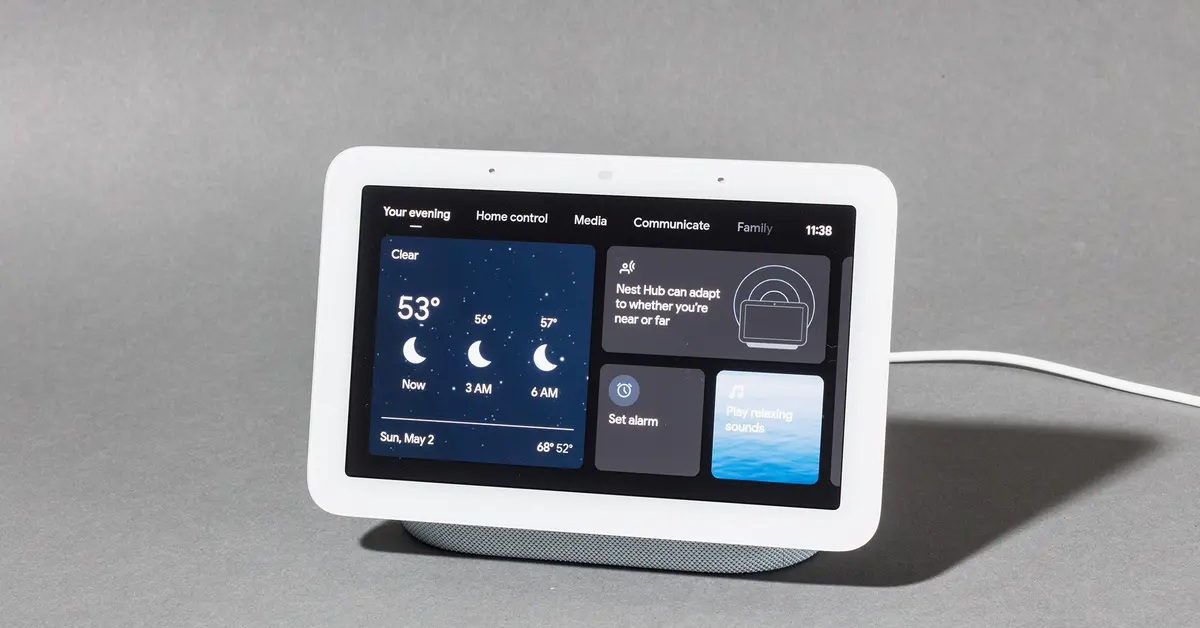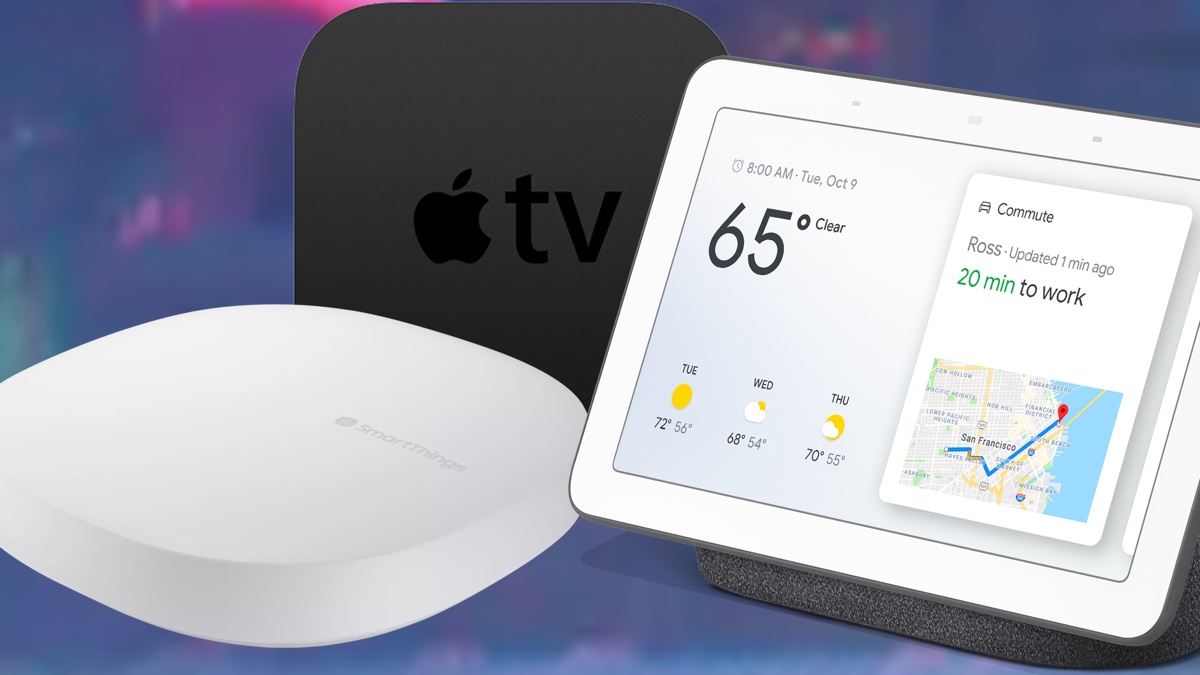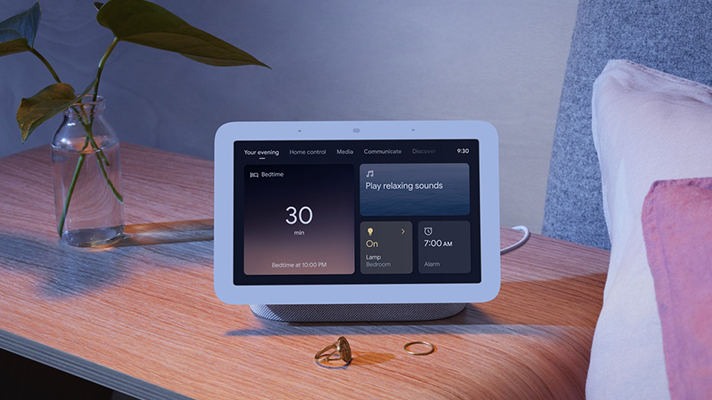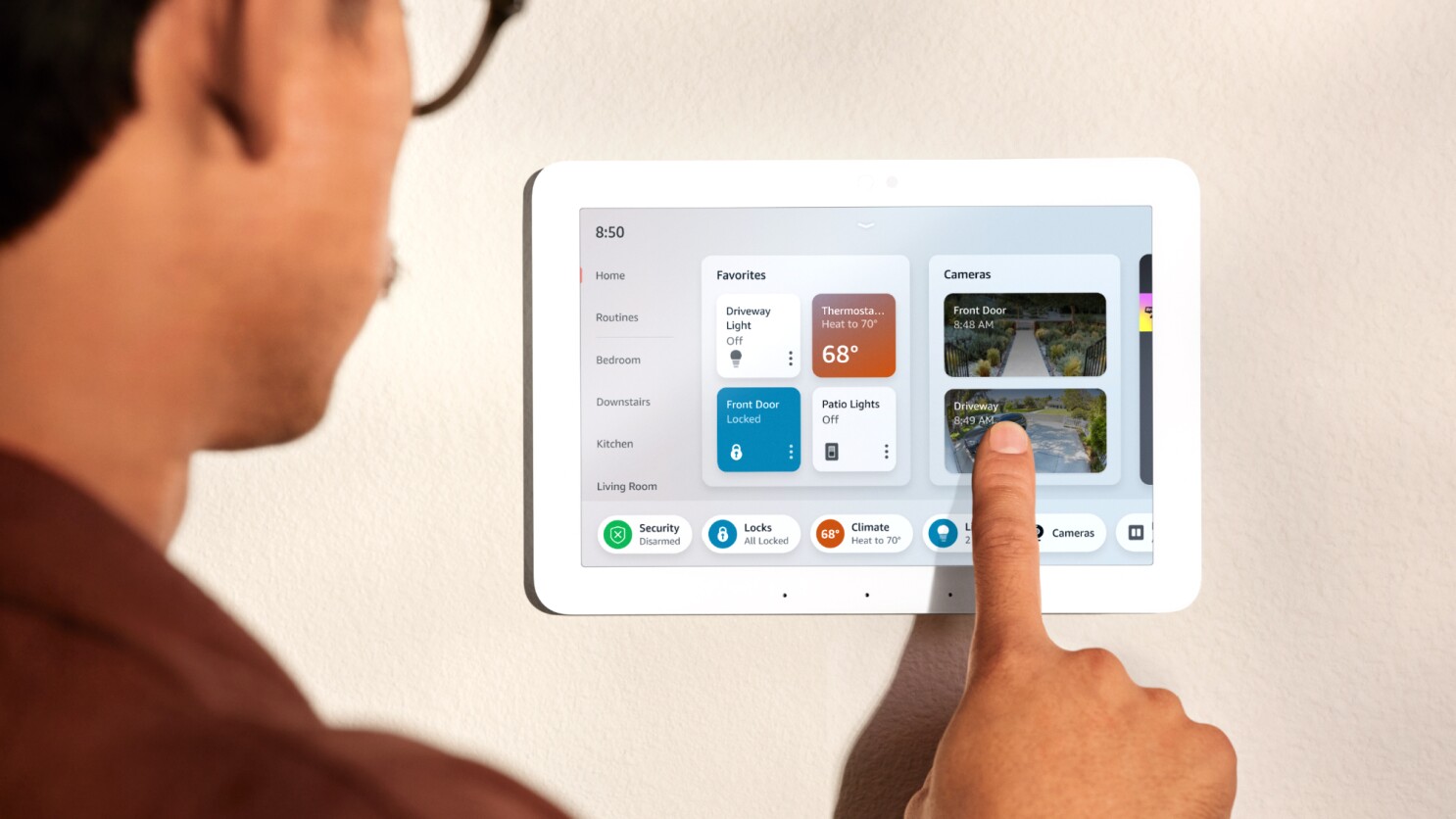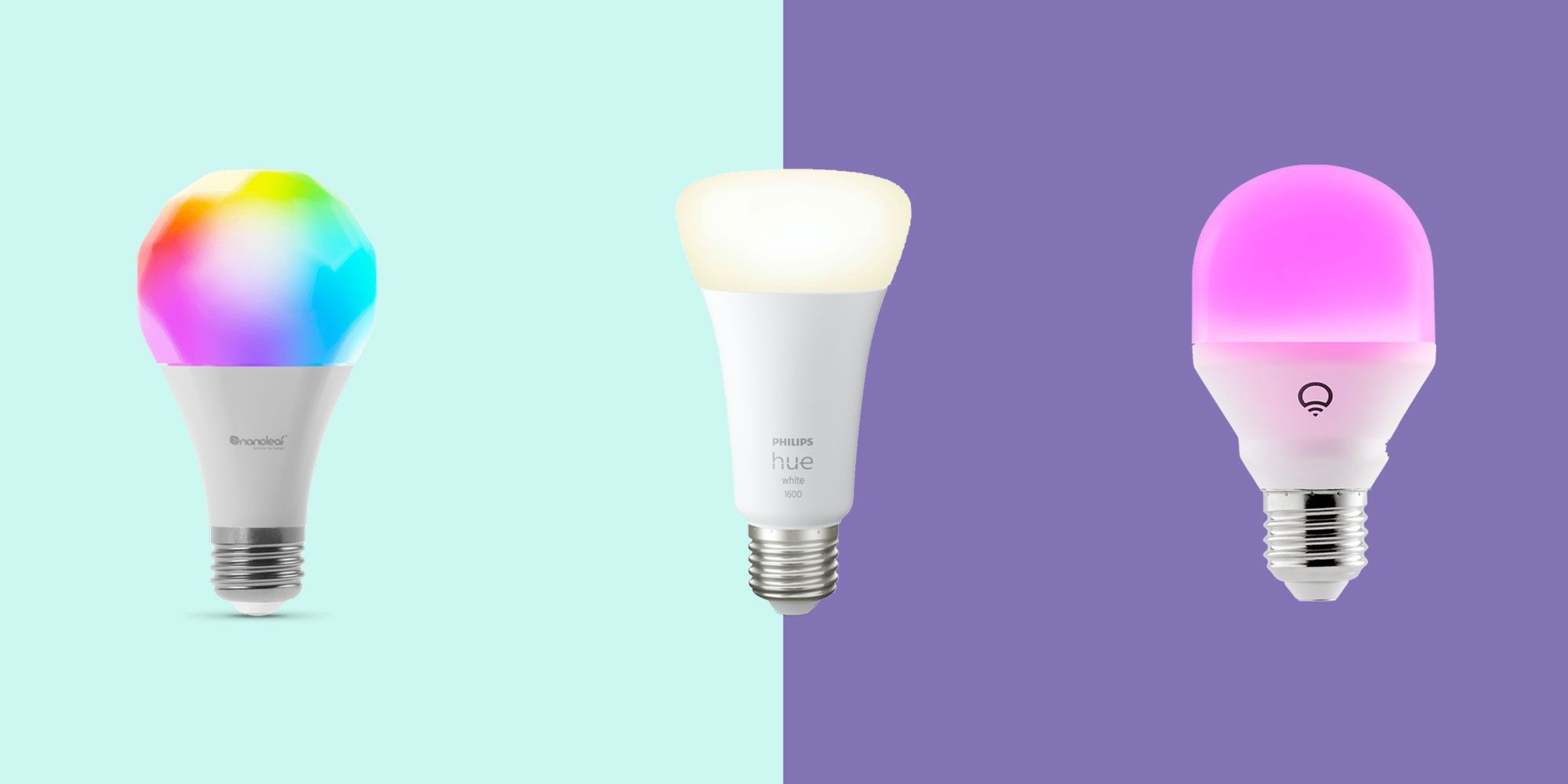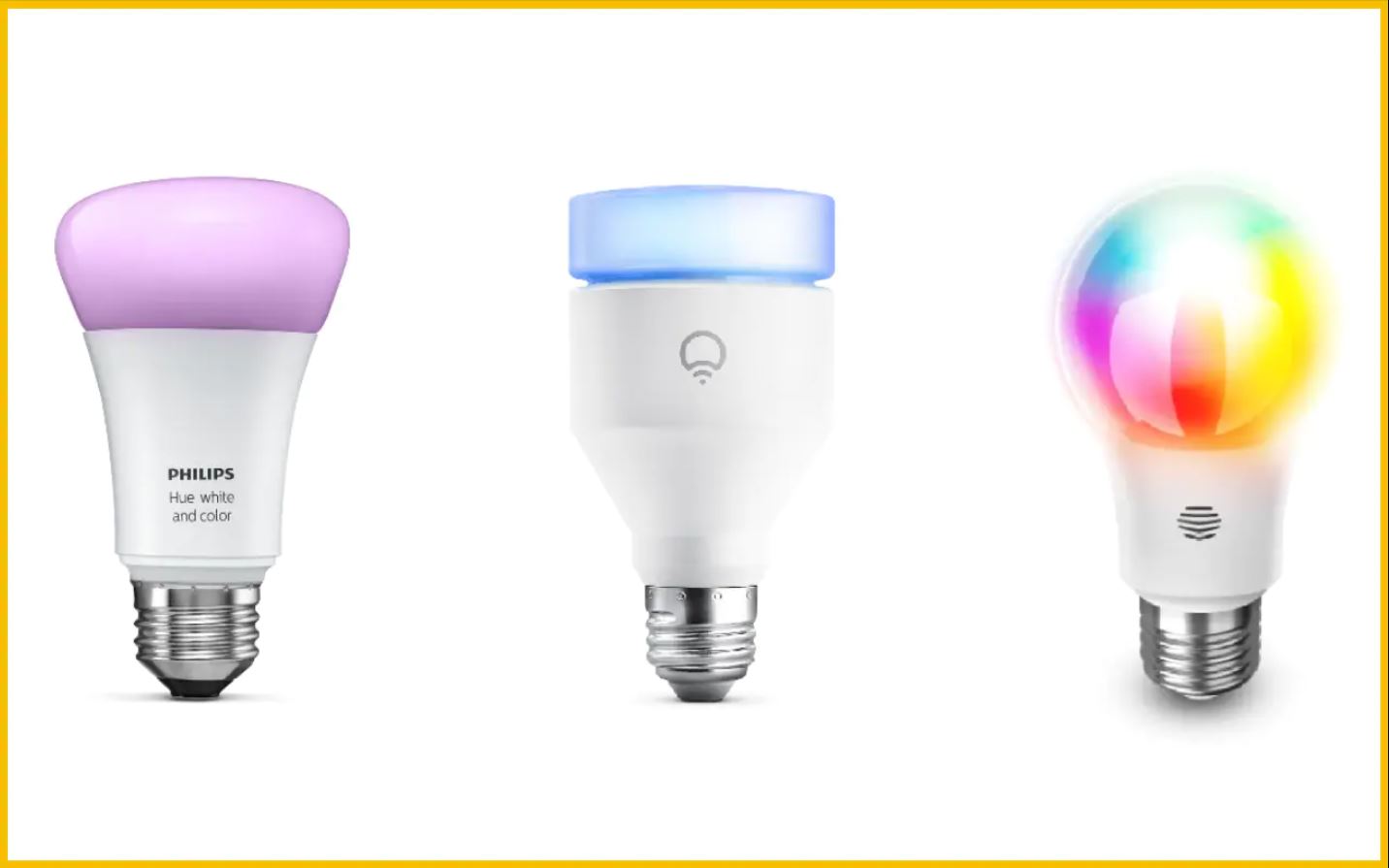Introduction
Welcome to the world of smart homes, where modern technology has made it possible to control and automate various devices and systems in your house with just a tap on your smartphone or a voice command. One of the key components in creating a smart home is a smart home hub, which acts as the central command center for all your connected devices. In this article, we will explore the best smart home hubs to use with Google Home, a popular voice-controlled smart speaker and virtual assistant.
A smart home hub serves as the intermediary between your connected devices, such as lights, thermostats, locks, and security systems, and allows you to control and manage them from a single platform. It enables seamless communication between different devices that use different protocols, such as Wi-Fi, Bluetooth, Zigbee, or Z-Wave, ensuring compatibility and integration. By connecting your smart home devices to a hub, you can streamline their functionality, create automation routines, and enjoy the convenience of controlling everything from one place.
When it comes to choosing the right smart home hub for your Google Home, it is essential to consider compatibility, features, ease of use, and integrations. The integration between Google Home and the smart home hub is crucial because it determines how well they can work together to provide a seamless experience and allow you to control your devices using voice commands through Google Assistant.
In this comprehensive guide, we will discuss the benefits of using a smart home hub with Google Home, highlight the essential features to look for, and compare some of the best smart home hubs compatible with Google Home. Whether you are just starting to build your smart home or looking to expand your existing setup, this article will help you make an informed decision and find the best smart home hub to enhance your Google Home experience.
What is a Smart Home Hub?
A smart home hub is a central device that connects and controls various smart home devices and systems in your house. It acts as the brain of your smart home, facilitating communication between different devices that use different protocols. By serving as a central command center, a smart home hub allows you to control and manage all your connected devices from a single platform.
One of the primary functions of a smart home hub is to bridge the communication gap between different devices and protocols. For example, if you have smart lights that use Wi-Fi, a smart thermostat that uses Z-Wave, and a smart lock that uses Zigbee, the smart home hub can translate and communicate with all these devices, ensuring seamless integration and control.
Moreover, a smart home hub enables you to create automation routines and scenarios within your smart home ecosystem. This means that you can set up actions or triggers to occur automatically based on certain conditions. For instance, you can create a routine where your lights turn on automatically when you unlock the front door or have your security system arm itself when you leave the house.
Another advantage of using a smart home hub is the ability to control your devices remotely. With the hub connected to the internet, you can access and control your smart home devices from anywhere using a smartphone app or a web portal. This allows you to monitor and manage your home even if you are miles away.
Furthermore, a smart home hub often comes with additional features and integrations that enhance the functionality of your smart home. These may include compatibility with voice assistants like Google Assistant or Amazon Alexa, support for third-party applications and services, and the ability to create custom rules and scenes.
Overall, a smart home hub is the backbone of your smart home system, providing a centralized control and management hub for all your smart devices. It simplifies the setup and operation of your smart home, enhances integration between devices, and allows for customization and automation to create a truly intelligent and convenient living space.
Benefits of Using a Smart Home Hub with Google Home
Pairing a smart home hub with Google Home can bring numerous benefits to your smart home experience. Here are some key advantages of using a smart home hub with Google Home:
- Enhanced Device Compatibility: Smart home hubs act as a bridge between different devices and protocols, allowing you to control a wide range of smart devices. By integrating a smart home hub with Google Home, you can control devices that may not natively support Google Assistant. This expands the compatibility and functionality of your smart home ecosystem.
- Centralized Control: With a smart home hub, you can control all your connected devices from a single platform. By pairing it with Google Home, you can conveniently use voice commands to control your devices, adjust settings, and create automation routines. This centralized control makes managing your smart home simpler and more intuitive.
- Seamless Integration: Integrating a smart home hub with Google Home allows for seamless integration with other Google services and devices. For example, you can link your smart home devices with your Google Calendar, allowing automated actions based on your schedule. You can also use Google Assistant to stream music, ask for weather updates, and control your smart home devices all at once.
- Expanded Automation Capabilities: By combining a smart home hub’s automation capabilities and Google Home’s voice control, you can create intricate automation routines. For instance, you can program your hub to turn off all lights, lock doors, and adjust the thermostat when you say “Goodnight, Google.” This level of automation adds convenience and efficiency to your daily routines.
- Remote Access and Monitoring: When a smart home hub is connected to the internet, you can control and monitor your devices remotely. By integrating it with Google Home, you can use your smartphone or Google Assistant-enabled device to access and control your smart home from anywhere. This allows you to check camera feeds, adjust temperature settings, and receive alerts, providing peace of mind even when you’re away.
By combining the capabilities of a smart home hub with the voice control and services offered by Google Home, you can create a truly integrated and streamlined smart home experience. The convenience, expanded device compatibility, automation capabilities, and remote access enhance your comfort, security, and efficiency, making your everyday life more enjoyable and effortless.
Features to Look for in a Smart Home Hub
When choosing a smart home hub to pair with your Google Home, there are several key features to consider. These features will determine the functionality, compatibility, and overall experience of your smart home system. Here are some important features to look for in a smart home hub:
- Compatibility: Ensure that the smart home hub is compatible with the devices and protocols you already have or plan to include in your smart home. Look for a hub that supports a wide range of devices, including popular brands and protocols like Wi-Fi, Z-Wave, Zigbee, and more.
- Voice Control Integration: Check if the smart home hub supports voice control through Google Assistant or Amazon Alexa. This allows you to use voice commands to control your devices and create voice-activated automation routines, enhancing the convenience and hands-free experience.
- Automation Capabilities: Look for a hub that provides robust automation capabilities. This includes the ability to create custom scenes, schedules, and rules that trigger actions based on specific conditions or events. The more flexible and customizable the automation features, the more control you will have over your smart home.
- User-Friendly Interface: A smart home hub should have a user-friendly interface that is easy to navigate and configure. Look for hubs with intuitive mobile apps or web interfaces that allow you to set up and manage your devices effortlessly.
- Reliability and Stability: It is essential to choose a smart home hub that is reliable and stable in terms of connectivity and performance. Look for hubs with good customer reviews and a reputation for reliability, ensuring that your smart home functions smoothly without frequent disruptions.
- Security Features: Consider the security features offered by the smart home hub. Look for hubs with built-in security protocols, encryption, and user authentication mechanisms to protect your smart home from unauthorized access and potential vulnerabilities.
- Third-Party Integrations: Check if the smart home hub supports integration with third-party applications and services. This allows you to expand the functionality of your smart home by connecting it with other platforms or automating routines with apps like IFTTT (If This Then That).
By considering these features, you can select a smart home hub that best aligns with your needs and preferences. Keep in mind that the right combination of compatibility, voice control integration, automation capabilities, user-friendliness, reliability, security, and third-party integrations will determine how effectively your smart home hub works with Google Home and enhances your overall smart home experience.
Comparison of Smart Home Hubs Compatible with Google Home
There are several smart home hubs available in the market that are compatible with Google Home. Each hub offers a unique set of features and advantages. Here is a comparison of some popular smart home hubs compatible with Google Home:
1. SmartThings Hub:
The SmartThings Hub is a popular choice for integrating various smart home devices. It supports a wide range of protocols, including Wi-Fi, Z-Wave, Zigbee, and more. The hub offers a user-friendly mobile app for setup and control, allowing you to easily manage your devices. It also supports Google Assistant voice control for hands-free operation.
2. Wink Hub 2:
The Wink Hub 2 is another popular option that supports a wide range of smart home devices and protocols. It has a sleek design and offers a user-friendly interface for easy setup and management. The hub supports Google Assistant voice control and allows for automation and scheduling of devices.
3. Hubitat Elevation:
The Hubitat Elevation hub focuses on privacy and local processing, allowing you to control your smart home devices without relying on cloud services. It supports various protocols like Z-Wave, Zigbee, and more. The hub offers advanced automation capabilities and supports Google Assistant integration for voice control.
4. Home Assistant:
Home Assistant is an open-source smart home hub that provides extensive customization and flexibility. It supports a wide range of smart home devices and protocols. The hub requires some technical knowledge for setup and configuration but offers robust automation capabilities. It can be integrated with Google Assistant for voice control.
5. Logitech Harmony Hub:
The Logitech Harmony Hub is mainly focused on home entertainment control. It allows you to control your TV, speakers, and other home entertainment devices seamlessly. While it may not support as many protocols as other hubs, it integrates well with Google Assistant, allowing you to control your home entertainment system using voice commands through Google Home.
When comparing these smart home hubs, consider factors such as device compatibility, ease of use, automation capabilities, voice control integration, and any specific features or requirements you may have for your smart home setup. Make sure to choose a hub that best fits your needs and enhances your Google Home experience.
SmartThings Hub
The SmartThings Hub, developed by Samsung, is a versatile and widely compatible smart home hub that seamlessly integrates with Google Home. It offers a range of features and benefits that enhance the functionality and convenience of your smart home setup.
One of the key advantages of the SmartThings Hub is its wide device compatibility. It supports several protocols, including Wi-Fi, Z-Wave, Zigbee, and more. This compatibility ensures that you can connect and control a vast array of smart devices from various manufacturers, allowing for a truly integrated and versatile smart home ecosystem.
Setting up the SmartThings Hub is a breeze, thanks to its user-friendly mobile app. The app provides step-by-step instructions on how to connect and configure your devices. It also offers a straightforward interface for managing your devices, creating automation routines, and monitoring your smart home at a glance.
The integration between the SmartThings Hub and Google Home is seamless, enabling you to control your devices using voice commands through Google Assistant. Whether you want to turn on the lights, adjust the thermostat, or lock the doors, simply ask Google Home and let the SmartThings Hub execute your commands.
With the SmartThings Hub, you can create automation routines to enhance the functionality of your smart home. For example, you can program your lights to turn on automatically when you enter a room, or have your security cameras start recording when motion is detected. The possibilities for customizing your smart home experience are virtually limitless.
Furthermore, the SmartThings Hub offers compatibility with a wide range of third-party devices and services, extending the functionality of your smart home. You can integrate your smart home with apps like IFTTT (If This Then That) to create even more advanced automation scenarios and connect with other smart home platforms.
In terms of reliability, the SmartThings Hub has a strong reputation for stability and robust performance. It provides a reliable connection between your devices and ensures that your smart home operates smoothly, without any frequent disruptions.
In summary, the SmartThings Hub is an excellent choice for integrating your smart home devices with Google Home. With its wide device compatibility, user-friendly interface, seamless Google Home integration, automation capabilities, and reliability, the SmartThings Hub offers a comprehensive solution for enhancing your smart home experience.
Wink Hub 2
The Wink Hub 2 is a popular smart home hub that offers seamless compatibility with Google Home. Packed with features and a user-friendly interface, the Wink Hub 2 enhances your smart home experience by providing effortless control and automation.
One of the standout features of the Wink Hub 2 is its wide range of device compatibility. It supports various smart home protocols, including Wi-Fi, Z-Wave, Zigbee, and more. This extensive compatibility ensures that you can connect and control a wide array of smart devices, from lights and thermostats to locks and sensors.
Setting up the Wink Hub 2 is a breeze, thanks to its intuitive and user-friendly interface. The Wink mobile app guides you through the setup process, making it easy to connect and configure your devices. Additionally, the app provides a centralized location to manage and control all your connected devices, eliminating the need for multiple apps for each individual device.
The integration between the Wink Hub 2 and Google Home is seamless, allowing you to control your devices using voice commands via Google Assistant. This hands-free control adds convenience and accessibility to your smart home, enabling you to effortlessly adjust settings, activate routines, and control various devices with just your voice.
With the Wink Hub 2, you can create automation routines and schedules to enhance the functionality of your smart home. For instance, you can set your lights to turn on automatically when you arrive home, or have your thermostat adjust to your preferred temperature as you wake up in the morning. The Wink mobile app provides a user-friendly interface for creating and managing these automation routines.
In terms of reliability, the Wink Hub 2 delivers stable and consistent performance. It maintains a reliable connection between your devices and ensures that your smart home operates smoothly without any hiccups or connectivity issues.
Furthermore, the Wink Hub 2 offers compatibility with various third-party devices and services, providing enhanced functionality for your smart home. You can integrate it with platforms like IFTTT (If This Then That) to create more advanced automation scenarios or connect with other smart home systems for even more flexibility.
In summary, the Wink Hub 2 is a robust and user-friendly smart home hub compatible with Google Home. With its extensive device compatibility, easy setup and control, seamless Google Home integration, reliable performance, and support for third-party integrations, the Wink Hub 2 is an excellent choice for expanding and managing your smart home ecosystem.
Hubitat Elevation
The Hubitat Elevation is a unique and privacy-focused smart home hub that offers seamless compatibility with Google Home. Designed to operate locally and prioritize privacy, the Hubitat Elevation provides advanced control and automation capabilities for your smart home setup.
One of the standout features of the Hubitat Elevation is its focus on local processing. Unlike cloud-dependent smart home hubs, the Hubitat Elevation operates locally within your home network. This ensures that your data stays within your control, enhancing privacy and reducing reliance on internet connectivity.
The Hubitat Elevation supports a range of popular smart home protocols, including Z-Wave, Zigbee, and more. This compatibility allows you to connect and control a wide variety of smart devices from different manufacturers, ensuring seamless integration with your existing smart home devices.
Setting up and configuring the Hubitat Elevation may require a bit more technical knowledge compared to other hubs. However, the hub provides detailed documentation and a user-friendly interface to ease the process. Once set up, you can use the intuitive dashboard to manage and control your smart devices, create automation rules, and monitor your smart home at a glance.
When it comes to integrating with Google Home, the Hubitat Elevation offers seamless integration through Google Assistant. This allows you to control your devices using voice commands, giving you hands-free access to your smart home. Whether it’s turning on lights, adjusting thermostats, or locking doors, the Hubitat Elevation and Google Home work together to make controlling your smart home effortless.
The Hubitat Elevation offers advanced automation capabilities, allowing you to create complex rules and triggers that automate tasks based on specific conditions or events. You can create custom scenes, schedule actions, and even create intricate automation routines using the Rule Machine. This level of automation customization empowers you to tailor your smart home experience to fit your specific needs and preferences.
Moreover, the Hubitat Elevation has the ability to integrate with various third-party devices and services. This expands the functionality of your smart home by allowing you to connect with platforms like IFTTT (If This Then That) and integrate with other smart home ecosystems, offering even more possibilities for automation and control.
In summary, the Hubitat Elevation is a privacy-focused smart home hub that offers powerful control and automation capabilities. With its local processing, support for popular smart home protocols, seamless integration with Google Home, advanced automation features, and compatibility with third-party services, the Hubitat Elevation is an excellent choice for those seeking privacy and control in their smart home ecosystem.
Home Assistant
Home Assistant is an open-source smart home hub that offers extensive customization and flexibility. With its compatibility with Google Home, Home Assistant provides a powerful platform to integrate and control various smart devices within your home.
One of the key strengths of Home Assistant is its support for a wide range of smart home devices and protocols. Whether it’s Wi-Fi, Z-Wave, Zigbee, or many others, Home Assistant can connect and control devices from different manufacturers and protocols, allowing for a highly interoperable smart home ecosystem.
Setting up Home Assistant may require some technical knowledge, as it involves configuring and customizing the system to suit your specific needs. However, the effort pays off in terms of the level of customization and control it offers. Home Assistant provides a web-based interface where you can configure devices, create automation rules, and monitor your smart home from a single dashboard.
Integration with Google Home is seamless, enabling voice control of your smart home devices using Google Assistant. By linking your Home Assistant setup with Google Home, you can use voice commands to control your devices, create routines, and manage your smart home effortlessly.
Home Assistant shines in its automation capabilities, allowing you to create complex, rule-based automation scenarios. Whether it’s triggering actions based on time, device status, or sensor inputs, Home Assistant’s automation engine, coupled with its powerful scripting capabilities, empowers you to fully customize your smart home automation routines.
As an open-source platform, Home Assistant is highly extensible and offers a wide range of integrations with third-party devices and services. From popular smart home platforms like Philips Hue and Nest to less mainstream brands, Home Assistant has a growing list of integrations that allow for a seamless integration of various smart home devices and services.
Additionally, Home Assistant’s community is highly active and supportive. Whether you need assistance with configuration or want to explore new integrations, the Home Assistant community is a valuable resource for guidance, tutorials, and troubleshooting.
In summary, Home Assistant is an open-source smart home hub that provides extensive customization, integration options, and flexibility. With its wide device compatibility, seamless integration with Google Home, advanced automation capabilities, and supportive community, Home Assistant is a versatile platform for creating a highly personalized smart home experience.
Logitech Harmony Hub
The Logitech Harmony Hub is a smart home hub that focuses on controlling home entertainment devices. While it may not support as many protocols as other hubs, the Harmony Hub provides seamless integration with Google Home, allowing you to easily control your home entertainment system using voice commands.
One of the primary strengths of the Logitech Harmony Hub is its ability to unify home entertainment control. By connecting your devices such as TVs, audio systems, gaming consoles, and streaming devices to the Harmony Hub, you can control them all from a single platform. This eliminates the need for multiple remotes, simplifying and streamlining your home entertainment experience.
The integration between the Harmony Hub and Google Home is seamless, enabling you to control your home entertainment devices using voice commands through Google Assistant. Whether it’s turning on your TV, changing the channel, adjusting volume, or launching a favorite movie or TV show, you can simply ask Google Home to perform these actions, and the Harmony Hub will execute the commands.
In addition to voice control, the Harmony Hub provides a user-friendly mobile app that allows you to create custom activities and control your devices. You can create personalized activities, combining multiple commands and devices, to initiate a specific set of actions with a single tap on your smartphone.
The Harmony Hub offers a comprehensive device database, making it compatible with a wide range of home entertainment brands and models. It simplifies the setup process by providing step-by-step instructions and guiding you to identify and control your devices, ensuring a seamless and hassle-free setup.
Furthermore, the Harmony Hub can integrate with other smart home devices and services, expanding its functionality beyond home entertainment control. It can work with smart lights, thermostats, and other smart devices to create more immersive and integrated smart home experiences.
Although the Logitech Harmony Hub does not support as many protocols as other hubs, its focus on home entertainment control makes it ideal for those who want to centralize control over their TV and audio systems. Through its integration with Google Home, the Harmony Hub seamlessly blends your home entertainment devices into your overall smart home ecosystem, providing convenience and simplicity.
In summary, the Logitech Harmony Hub is a smart home hub that excels in controlling home entertainment devices. Its seamless integration with Google Home, user-friendly app, comprehensive device compatibility, and the ability to unify home entertainment control make it a worthwhile addition to your smart home setup, particularly if you want effortless voice control and centralized management of your home entertainment system.
Conclusion
Choosing the right smart home hub to pair with your Google Home is crucial in creating a seamless and integrated smart home experience. Each hub offers unique features and advantages that cater to different needs and preferences. Here’s a summary of what we’ve discussed:
A smart home hub acts as a central command center for your smart home, allowing you to control and manage all your connected devices from a single platform. By integrating a smart home hub with Google Home, you can leverage the power of voice control and create automation routines for a more convenient and automated living environment.
We explored some of the best smart home hubs compatible with Google Home:
- The SmartThings Hub offers wide device compatibility, a user-friendly interface, and seamless integration with Google Home.
- The Wink Hub 2 boasts extensive device compatibility, easy setup, and a sleek interface, allowing for easy control and automation.
- The Hubitat Elevation prioritizes privacy and local processing, providing advanced automation capabilities and Google Home integration.
- Home Assistant is an open-source hub with extensive customization options, wide device compatibility, powerful automation features, and third-party integrations.
- The Logitech Harmony Hub focuses on home entertainment control, allowing for seamless integration with Google Home for voice control of your devices.
Considering factors like device compatibility, ease of use, automation capabilities, voice control integration, reliability, and third-party integrations will help you make an informed decision when choosing the right smart home hub.
Ultimately, the best smart home hub for you depends on your specific requirements and preferences. Whether you prioritize wide device compatibility, advanced automation capabilities, or seamless integration with Google Home, there is a smart home hub that can enhance your smart home experience.
By selecting the right smart home hub and integrating it with Google Home, you can create a truly interconnected and automated smart home. The combination of device control, automation routines, and voice commands through Google Assistant will streamline your daily tasks, enhance convenience, and make your home a more comfortable and efficient living space.







